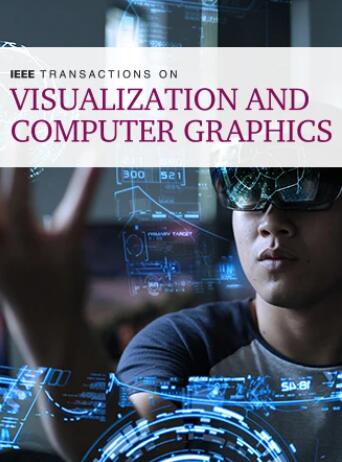LC-NeRF: Local Controllable Face Generation in Neural Randiance Field
IF 6.5
1区 计算机科学
Q1 COMPUTER SCIENCE, SOFTWARE ENGINEERING
IEEE Transactions on Visualization and Computer Graphics
Pub Date : 2023-02-19
DOI:10.48550/arXiv.2302.09486
引用次数: 0
Abstract
3D face generation has achieved high visual quality and 3D consistency thanks to the development of neural radiance fields (NeRF). However, these methods model the whole face as a neural radiance field, which limits the controllability of the local regions. In other words, previous methods struggle to independently control local regions, such as the mouth, nose, and hair. To improve local controllability in NeRF-based face generation, we propose LC-NeRF, which is composed of a Local Region Generators Module (LRGM) and a Spatial-Aware Fusion Module (SAFM), allowing for geometry and texture control of local facial regions. The LRGM models different facial regions as independent neural radiance fields and the SAFM is responsible for merging multiple independent neural radiance fields into a complete representation. Finally, LC-NeRF enables the modification of the latent code associated with each individual generator, thereby allowing precise control over the corresponding local region. Qualitative and quantitative evaluations show that our method provides better local controllability than state-of-the-art 3D-aware face generation methods. A perception study reveals that our method outperforms existing state-of-the-art methods in terms of image quality, face consistency, and editing effects. Furthermore, our method exhibits favorable performance in downstream tasks, including real image editing and text-driven facial image editing.LC-NeRF:神经距离场的局部可控人脸生成
由于神经辐射场(neural radiance fields, NeRF)的发展,3D人脸生成已经达到了高视觉质量和3D一致性。然而,这些方法将整个脸部建模为一个神经辐射场,这限制了局部区域的可控性。换句话说,以前的方法很难独立控制局部区域,如嘴、鼻子和头发。为了提高基于nerf的人脸生成的局部可控制性,我们提出了LC-NeRF,它由局部区域生成器模块(LRGM)和空间感知融合模块(SAFM)组成,允许局部面部区域的几何和纹理控制。LRGM将不同的面部区域建模为独立的神经辐射场,SAFM负责将多个独立的神经辐射场合并为一个完整的表示。最后,LC-NeRF允许修改与每个单独的生成器相关的潜在代码,从而允许对相应的局部区域进行精确控制。定性和定量评估表明,我们的方法比最先进的3d感知人脸生成方法提供了更好的局部可控性。一项感知研究表明,我们的方法在图像质量、面部一致性和编辑效果方面优于现有的最先进的方法。此外,我们的方法在下游任务中表现出良好的性能,包括真实图像编辑和文本驱动的面部图像编辑。
本文章由计算机程序翻译,如有差异,请以英文原文为准。
求助全文
约1分钟内获得全文
求助全文
来源期刊

IEEE Transactions on Visualization and Computer Graphics
工程技术-计算机:软件工程
CiteScore
10.40
自引率
19.20%
发文量
946
审稿时长
4.5 months
期刊介绍:
TVCG is a scholarly, archival journal published monthly. Its Editorial Board strives to publish papers that present important research results and state-of-the-art seminal papers in computer graphics, visualization, and virtual reality. Specific topics include, but are not limited to: rendering technologies; geometric modeling and processing; shape analysis; graphics hardware; animation and simulation; perception, interaction and user interfaces; haptics; computational photography; high-dynamic range imaging and display; user studies and evaluation; biomedical visualization; volume visualization and graphics; visual analytics for machine learning; topology-based visualization; visual programming and software visualization; visualization in data science; virtual reality, augmented reality and mixed reality; advanced display technology, (e.g., 3D, immersive and multi-modal displays); applications of computer graphics and visualization.
 求助内容:
求助内容: 应助结果提醒方式:
应助结果提醒方式:


